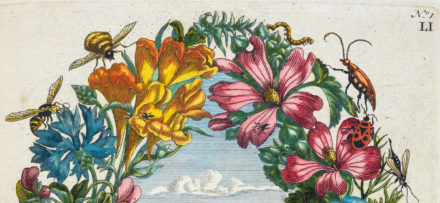Museums are transforming for the 21st century, and artists are critical partners and catalysts for that transformation. This was a resounding message of yesterday’s Google Art Talk occasioned by artist Sam Durant’s project “What #isamuseum?” for this year’s Getty Artists Program.
In a conversation moderated by Toby Tannenbaum, the Getty Museum’s head of education, Sam and colleagues spoke about reinventing the museum from the “white cube” of 20th-century art to an ever more engaged and challenging space in which all participants, inside and outside the institution, play an active role.
Here, a brief summary with direct links to timestamps of points discussed.
Why Question Museums?
Sam Durant describes the “What #isamuseum?” project (online at isamuseum.org), how it emerged out of collaboration with Getty staff, and its use of social media as experiment.
“The idea was to get visitors thinking about these questions, not to just consume the museum as it’s presented, but to question what’s going on.” —Sam
Can Museums Entertain as Well as Educate? Should They?
Robert Sain of the Centre for Living Arts “adds more questions to the brew” by considering the multiple, and at times conflicting, roles of museums.
“How do museums manage the paradox of needing and wanting to be a popcorn machine of cultural activity, and at the same time a place of contemplation, reflection, solitude, and learning?” —Bob
Museums Must Be Relevant in Larger Conversations
Pablo Helguera of MoMA, an artist who has worked in museum education for two decades, addresses how the construct of the museum is changing from the “white cube” designed for 20th century art to a new model for the 21st—and the role of artists in that change.
“How and why is a museum today relevant in the larger context, in the larger conversation that is operating in the rest of the world?…That’s why we have to turn back to artists, and what artists are interested in.” —Pablo
Artists Should Play Bigger Roles in Cultural Institutions
Jessica Cusick of the city of Santa Monica, which commissions one-night-only works of art for its immersive Glow festival, speaks about the important role of cultural institutions in creating opportunities for artists to work in public, and for audiences to engage with art.
“Living artists should have a bigger role in everything that cultural institutions are doing….Cultural institutions lose track of the fact that without cultural producers—artists—we wouldn’t have a reason for being.” —Jessica
We Are Not Our Job Titles
What does a successful partnership between an institution and practicing artists look like? Sam talks about fruitful creative collaborations, which he defines as working together as individuals, with hierarchy out the window.
“We don’t have to follow the titles we have: curator, director of education, artist, etc. etc. We can work together, and everybody has stuff to bring to the table. That’s what was driving my impetus for the project here at the Getty.” —Sam
Is a Museum Really for Everyone?
Bob talks about the challenges he faced in his quest to create “age-free” experiences for LACMA Lab, which upended established notions about how a museum should present art.
“We commissioned artists to incorporate objects from the permanent collection into a participatory installation, but we let the artist define ‘participation.’…The artist [is] a resource as museums try to figure out they activate the permanent collection.” —Bob
Engaging Visitors, Engaging Institutions
A love-frustration-love story about museums: Pablo describes his own trajectory as an artist and a museum educator in response to a viewer question about participants’ relationships with museums, and discusses his Artists Experiment project at MoMA, which taps artists to create engaging (and challenging) museum experiences.
“Whatever we do has to imply a certain commitment and a certain challenge not only for us, but also for the artists, the museum, and the visitors…[The time] when we really break thresholds is when we create a system of communication between the institution and individual collaborators; when tensions become productive, and we force ourselves to exit our normal comfort zones.” —Pablo
How Do We Know If We’ve Succeeded?
And when a project is done: Then what? Toby asks participants to comment on measuring the success of artists’ projects in museums. What’s our metric? Can you put a value on civic engagement?
“The outcome isn’t really measurable…It’s more about an interaction or an engagement with the audience, with the participants, viewers. For me it’s about sparking a thought process and a discourse and a debate around these issues. How do you measure that? Very difficult.” —Sam
“The art world is currently obsessed with metrics: What impact does the funder get from that money? What impact does the project have? The metric we tried to establish [in Transforma projects in New Orleans] is, What does the artist want to accomplish?” —Jessica
Here’s the video in its entirety; to share a thought or pose a question, tweet with the hashtag—you guessed it—#isamuseum.
Text of this post © J. Paul Getty Trust. All rights reserved.




Museums are repositories. It seems to me that, as such they can serve multiple roles for their communities: educational, entertainment and at their best, inspirational. They can also be sanctuaries where nothing more than the receiving of impressions occurs. Nice post. Thank you!
Thanks, George! I like the word “repository,” as it seems to be both rich and a blank canvas. A repository of objects, of expertise, but also of experiences, of encounters, of joy, of people. Thanks for reading!